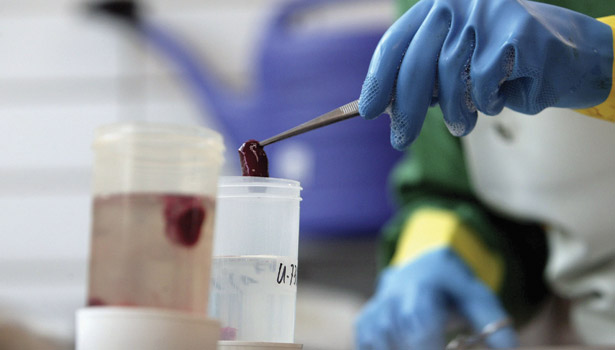I recently attended an <em>E. coli </em>conference. As always, it was a great opportunity to find out how North Americans are doing in our collective fight against Pathogenic bacteria, <em>E coli </em>O157:H7.
One session that was particularly interesting provided the audience with the circumstances of an actual recall. We were all provided all of the information the company had at the time of the recall, and asked to ascertain whether we could have avoided the recall.
The one recall that was most interesting involved a burger processor. This processor tested both their raw materials and finished product. However based on a routine FSIS test, they were faced with recalling the affected product out of the marketplace.
What was surprising to me was the overwhelming opinion of the audience and the expert panel. They believed the company should have tested more. This did not make sense to me given the testing the company had performed was extensive. In all cases the company’s test results were negative and yet the FSIS test result was positive. What does that tell us? Which test results do we believe?
Considering <em>E. coli</em> O157:H7 does not exist uniformly in a batch of meat, it is more than plausible to get both a negative and a positive result from the same batch of ground beef.
In hindsight, the expert panel concluded the answer was not more testing. Instead the company should have worked together with FSIS to control their lots. Whenever a sample is drawn by FSIS the company should hold all associated finished product connected with that sample until the result is known.
This example demonstrates that testing is only part of a good food safety system. It provides data regarding the efficacy of the upstream interventions in slaughter. However a negative result does not mean that the entire associated underlying product drawn from the sample is safe.
In fact HACCP principles tell us that instead of testing more, we must consider what hazards are likely to occur - and then determine if a process step can be put in place to reduce or eliminate the hazard.
In cases of <em>E. coli </em>O157:H7, instead of expending more dollars on testing we should instead spend our collective dollars on: clean living conditions to ensure clean animals go to slaughter, proper dehiding procedures, multiple step microbiological interventions, proper handling, temperature control during processing and, finally, education to cook ground product to an internal temperature of 160F.
In the future we may as an industry and government decide to end this madness of spending our resources on testing more and instead use these dollars to improve our processes.
Who knows... if we do we <em>may not</em> have any more example recalls to discuss.
I recently attended an E. coli conference. As always, it was a great opportunity to find out how North Americans are doing in our collective fight against Pathogenic bacteria, E coli O157:H7.
One session that was particularly interesting provided the audience with the circumstances of an actual recall. We were all provided all of the information the company had at the time of the recall, and asked to ascertain whether we could have avoided the recall.
The one recall that was most interesting involved a burger processor. This processor tested both their raw materials and finished product. However based on a routine FSIS test, they were faced with recalling the affected product out of the marketplace.
What was surprising to me was the overwhelming opinion of the audience and the expert panel. They believed the company should have tested more. This did not make sense to me given the testing the company had performed was extensive. In all cases the company’s test results were negative and yet the FSIS test result was positive. What does that tell us? Which test results do we believe?
Considering E. coli O157:H7 does not exist uniformly in a batch of meat, it is more than plausible to get both a negative and a positive result from the same batch of ground beef.
In hindsight, the expert panel concluded the answer was not more testing. Instead the company should have worked together with FSIS to control their lots. Whenever a sample is drawn by FSIS the company should hold all associated finished product connected with that sample until the result is known.
This example demonstrates that testing is only part of a good food safety system. It provides data regarding the efficacy of the upstream interventions in slaughter. However a negative result does not mean that the entire associated underlying product drawn from the sample is safe.
In fact HACCP principles tell us that instead of testing more, we must consider what hazards are likely to occur - and then determine if a process step can be put in place to reduce or eliminate the hazard.
In cases of E. coli O157:H7, instead of expending more dollars on testing we should instead spend our collective dollars on: clean living conditions to ensure clean animals go to slaughter, proper dehiding procedures, multiple step microbiological interventions, proper handling, temperature control during processing and, finally, education to cook ground product to an internal temperature of 160F.
In the future we may as an industry and government decide to end this madness of spending our resources on testing more and instead use these dollars to improve our processes.
Who knows... if we do we may not have any more example recalls to discuss.










